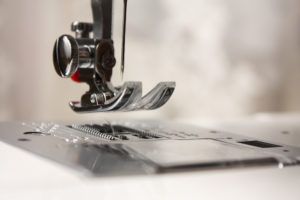
Clothing Manufacturing
The pattern is one of the basic components of clothing manufacturing. It forms the foundation of the design for the garment to be produced. However, it can be very difficult to master pattern making and get it right. It requires a lot of skill and attention to detail for getting the pattern right. Below is a brief guide to pattern making and the different methods of creating it.
Pattern Making is an Art
Clothing manufacturing involves many different processes. Fit is a crucial factor in that, which will determine how the final product will turn out to be. Therefore, the fit of the clothing item should be considered carefully when drafting the original pattern. The patternmaker will need to incorporate the shape and proportion of the body at appropriate locations to get a good customized fit design.
A pattern is flat, but the body of the individual wearing the garment is not. The body has definite height, width, and depth, and there are numerous curves and bulges too. All that has to be considered when making a pattern for the garment. That is why pattern making is considered an art, which involves maneuvering and outlining a flat piece of textile that will go along with the curves and proportions of the body.
Pattern making is the vital element that connects the designing phase of garment manufacture to its production stage. The sketch of the clothing item can be transformed into a functional piece of textile by interpreting the form through the pattern. Generally, the patternmaker will create a pattern from a flat sketch with a 2D illustration or actual body measurements. This will form the base template to decide the fit and design of the garment.
Different Methods of Pattern Making
There are three main methods of pattern making – drafting, draping, and flat paper pattern making. Drafting involves taking measurements from a sizing system or the accurate measurements of the body of an individual, a dress, or a body form. The measurements for the waist, chest, hip, etc., are marked on a paper, which is used by the patternmaker to draw construction lines for designing the pattern. Drafting is usually applied to create basic garment design patterns.
The draping method involves wrapping a textile piece around a body form that conforms to its shape and creates a 3D fabric pattern. This form is transferred onto a paper that is used by the patternmaker for creating the final pattern. The designer also adds ease allowances for movement in the pattern, so that the clothing piece is comfortable to wear. The main benefit of the draping method is that the designer can see the final effect of the pattern on the finished textile on the body form before it is cut and sewn. Yet it can be more time-consuming and expensive than other methods of pattern making.
The flat paper pattern making method is widely used in the clothing manufacturing industry because it is faster and more accurate than other techniques. Here, a fitted basic pattern is developed with comfort ease that will fit a body form or an individual. It uses a sloper as the initial point to design the pattern of the garment so that the final piece fits the body with the right amount of ease allowances for movement and comfort. The basic pattern pieces used for women’s clothing includes fitted bodice front and back with darts and neckline, sleeves, and snugly-fitted skirt front and back with darts. However, there can be many more slopers these days, as fashion changes frequently in women’s clothing.
Typically, a basic sloper will not have any seam allowances. This is to make its manipulations easy as per different garment styles. A sloper does not have any particular design interest either; it is just made of construction lines to facilitate pattern making. However, it is very important to make sure that the basic structure of the sloper will allow easy adjustments. That is because accurate measurements are vital to creating a good pattern.
Pattern Making Now
A modern-day textile company will have automated systems and computers to make pattern making easier for their designers. There are a lot of software programs available these days, which can meet the diverse needs of clothing manufacturers easily. Besides, the process has also become much faster and economical than going for the traditional methods of pattern making.
A pattern making software application will allow the designer to input any desired measurements to draft out a pattern immediately. The software will also create the pattern to fit the measurements specifically, which eliminates the fitting trial and error during the production phase of the sample. The automated system can also create a 3D form using the measurements of the individual. This helps to define a garment surface easily as per the body proportions and size of the individual.

